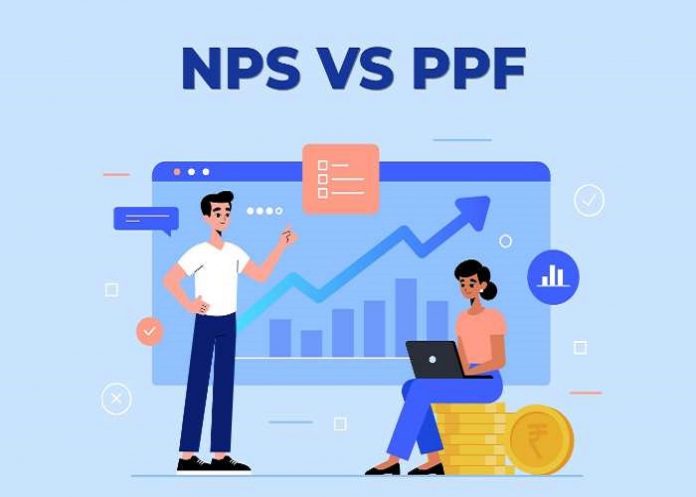Invest in PPF or NPS to avoid financial problems after retirement, this is a question that everyone has. Let’s get to the bottom of this…
Investing in a PPF vs. an NPS: People put money into the Public Provident Fund (PPF) and the National Pension System (NPS) in order to live a happy and comfortable life after they retire. Both of these strategies are excellent for accumulating retirement savings. However, there are certain distinctions between the two that must be understood before investing. So choosing between PPF and NPS for investment is simple.
PPF vs. NPS: What’s the Difference?
PPF investing is a long-standing tradition in which anyone can participate. At the same time, the government has introduced the National Pension Scheme (NPS) in order to develop the pension society. In the NPS account, the share market share is very high. NPS has the potential to earn better returns because it is tied to the stock market. While the government pays a fixed interest rate on PPF, it is a perfectly safe investment.
Read More: Cryptocurrency Now You Can do SIP in Crypto Too, Many Have Made Profits
Like this, you should be able to understand the mathematics of PPF.
When it comes to PPF, a person can invest Rs 1.5 lakh or Rs 12,500 per month for a year. If he earns 7.1 percent interest throughout the course of his investment, the investor will receive a maturity amount of Rs 1,54,50,911 (about Rs 1.5 crore) after 30 years, according to the PPF calculator.
A case like this will be kept in NPS.
On the other hand, if a person invests Rs 1.5 lakh per year or Rs 12,500 per month in the NPS program, the annuity rate is set at 40%. After retirement, a person can withdraw Rs 1,70,94,940 from his NPS account, according to the NPS calculator. The remaining Rs 1,13,96,627 can also be used to purchase an annuity. He would continue to receive a monthly pension of Rs 56,983 as a result of this.
Advantages of a tax exemption
Investments in the Public Provident Fund are tax-deductible under section 80C of the Internal Revenue Code. The money received in a PPF after the maturity limit has been reached, on the other hand, is interest-free. At the same time, the government offers an extra exemption of Rs 50,000 under section 80CCD(1B), in addition to the Rs 1.5 lakh exemption under section 80CCE, to encourage investment in NPS.
According to experts, if you must pick between PPF and NPS, the NPM scheme is the superior option. However, for a really secure future, it is wise to invest in both schemes. People can use PPF to save money for long-term financial requirements because it is tax-deferred. At the same time, NPS serves as a tool for wealth generation.



